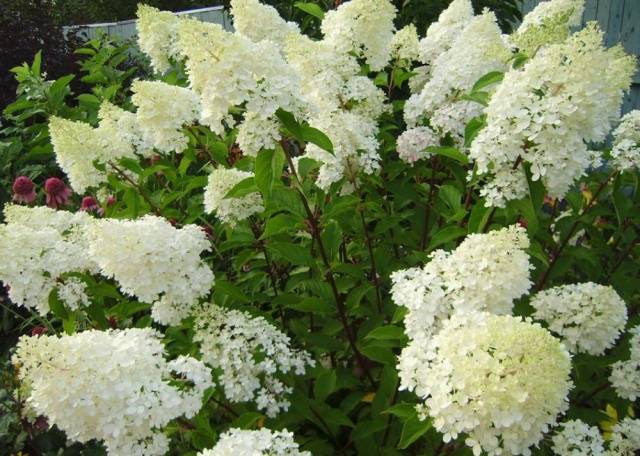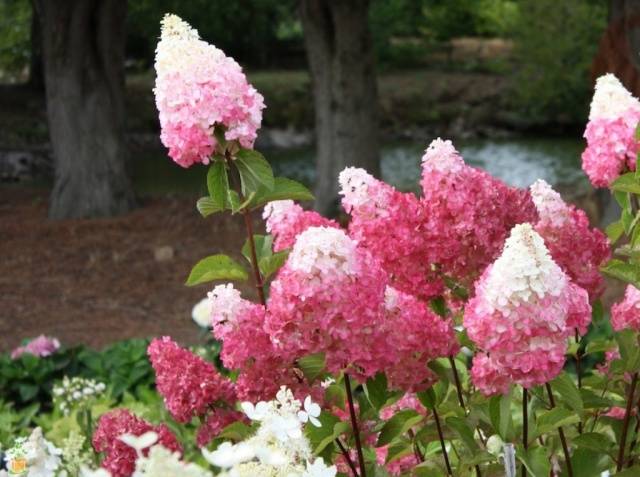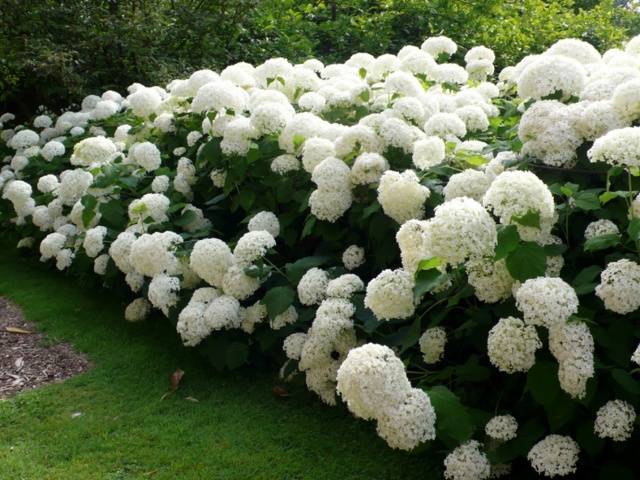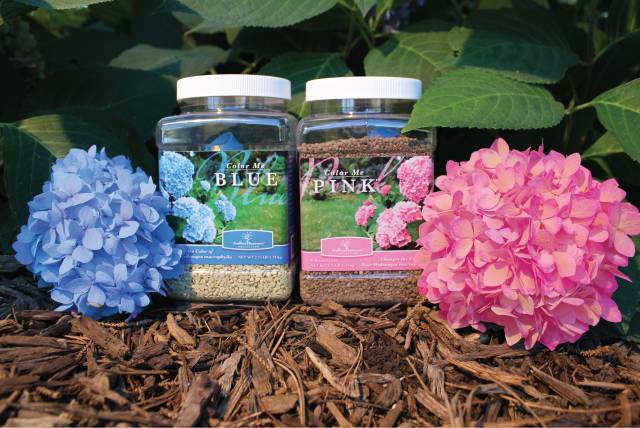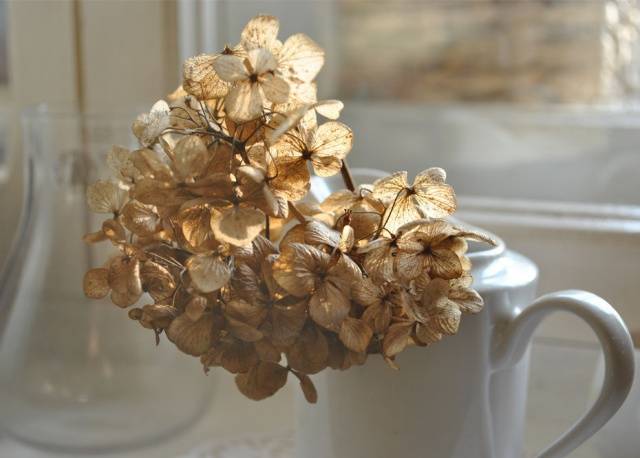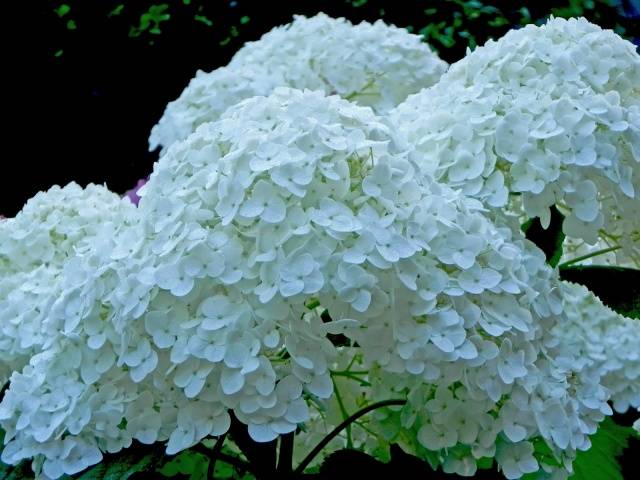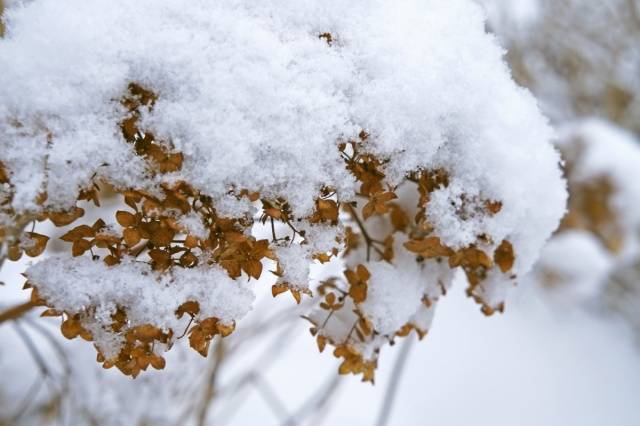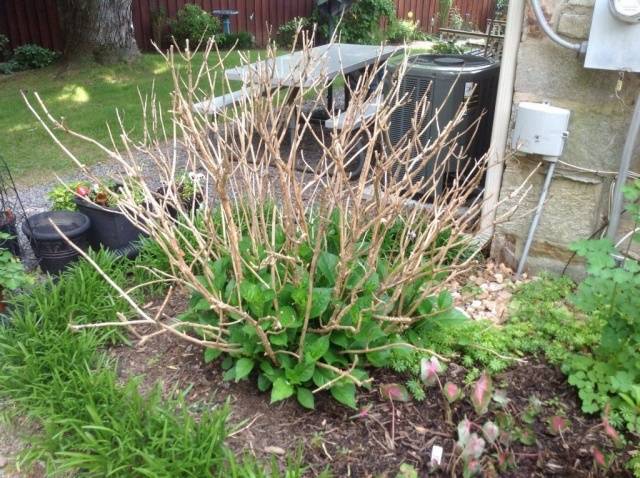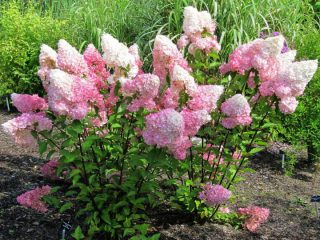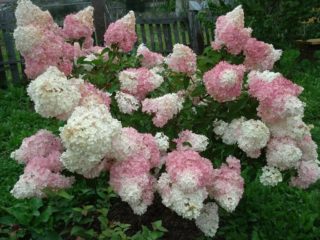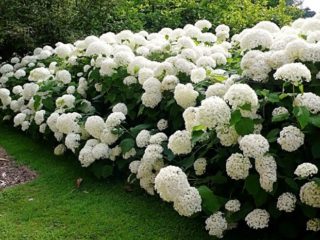Content
Until recently, the area of growth of this sensual and beautiful plant was limited to warm countries with a mild climate. Now this royal person is conquering more and more territories. And the closer to the north it grows, the more trouble for gardeners in the fall. The harsh climate of the northern regions dictates its own conditions. And the lower the thermometer goes, the more attention the hydrangea requires in preparation for winter. In the Urals, frosts of -35˚C –45˚C are not uncommon. Delicate shrubs can simply freeze out.
But different varieties require a different approach when preparing hydrangeas for winter.
Shrub species
Each variety of this beautiful shrub requires special attention not only when growing, but also when caring for them in the autumn, and especially when preparing hydrangeas for winter in the Urals.
Panicle hydrangea
A distinctive feature of the panicle hydrangea is its exuberant flowering. For this reason, this variety is the leader among all flowering shrubs. And although hydrangea grows almost everywhere, in the Urals it needs to create special conditions of detention. At the slightest inconsistency with the requirements for care, the splendor of the flowering fades away, and the color of the buds loses the brightness of color.
Paniculata hydrangea is extremely demanding on the composition of the soil, light and moisture. It is undesirable to plant this variety on an area with a close occurrence of groundwater.
Young seedlings must be "hardened" before planting in open ground. In the first year, they must be grown at home and only then transplanted to the site.
In the first 3-4 years, plants need to be helped to adapt to local climatic conditions, providing them with proper care and shelter for the hydrangea for the winter. In the Urals, when growing shrubs, special attention is paid to protecting plants from severe frosts and gusty winds.
Representatives of this variety are also critical to this type of care, such as timely and correct pruning. During the season, it is necessary to cut the bushes at least 2-3 times to form a lush crown.
Tree hydrangea
Treelike hydrangea is famous for its beauty and unusual color of terry inflorescences. The shrub loves well-lit places, but blooms in full force in light partial shade. The composition of the soil is important for him. The soil should be fertile and loose.
She feels very well in central Russia and in the Moscow region. But in the Urals, tree hydrangea often freezes out. And although it often recovers perfectly after wintering, growers do not recommend growing this variety in this region.
Large-leaved hydrangea
This type of shrub is considered the most unpretentious and picky to care for. A large-leaved hydrangea looks good on a personal plot, often designers use it in various compositions.
Extremely unassuming, she has long won the recognition of gardeners. And, despite the excellent indicators of frost resistance, it is still advisable to pay a little attention to it in the fall and take the necessary measures to prepare the hydrangea for winter. In the Urals, special attention should be paid to such a stage of work as timely shelter.
Autumn works
Like most garden shrubs, hydrangea bushes need autumn care. What work do gardeners have to do in the fall?
- Top dressing;
- Pruning;
- Shelter of hydrangeas for the winter.
It is very important to follow the recommendations of experienced florists. It is extremely undesirable to skip any stage of preparing a hydrangea for winter, because not only the lush flowering of the shrub depends on it, but also its safety.
Top dressing of shrubs in autumn
They begin to feed hydrangea in the Urals for winter at the end of August. During active flowering, they gave a huge amount of nutrients to the lush inflorescences. By autumn, the plants are weakened and without your help they will not be able to withstand severe frosts. Therefore, before preparing the hydrangea for winter, it must be well fertilized.
In the autumn period, for feeding hydrangeas, you need to give preference to fertilizers based on phosphorus and potassium. It is necessary to refuse nitrogenous fertilizers. They will provoke the growth of young shoots. You can fertilize shrubs with rotted manure or compost before wintering.
Fertilizers need to be applied at least twice before the onset of frost. About 3-4 weeks should pass between dressings. The feeding method depends on the climatic conditions. If the Indian summer is warm and there is very little rainfall, in this case the fertilizer should be diluted in water according to the instructions and the shrubs should be watered abundantly.
If, on the contrary, it rains very often, then it is better to use the dry method:
- Gently loosen the ground under the bush at a distance of 50-70 cm
- Spread dry granules evenly around the bush
- Loosen the soil slightly again, as if mixing it with fertilizers.
2-3 weeks after the secondary autumn feeding, you need to stop pre-winter watering and you can start the second stage of work on preparing the hydrangea for winter - pruning.
Pruning hydrangeas in the fall
Autumn pruning of hydrangeas still causes a lot of controversy among experienced gardeners. Someone advocates the obligatory pruning of shrubs, while someone, on the contrary, advises to postpone this event until spring.
Taking into account the peculiarities of the climate of the Ural region, you need to heed the advice of experienced flower growers and take into account the peculiarities of preparing hydrangeas of one kind or another for winter.
In a tree hydrangea, the following are subject to mandatory pruning:
- Withered buds;
- Damaged, broken and weak shoots;
- The upper part of the shoots;
- Old and last year branches.
If there are too many branches, you should thin out the bush by cutting out some of the branches. Otherwise, over time, the abundance of flowering will gradually decrease.
Large-leaved hydrangea differs in that flowers are formed on it on last year's shoots. Therefore, this event must be approached with caution. Old branches and weak shoots are subject to mandatory pruning.
It is necessary to shorten the shoots of large-leaved hydrangea in the spring. The upper part of the branches often freezes, and therefore, in the spring, be sure to carry out sanitary pruning and cut off frozen shoots.
The panicle hydrangea must be cut in the same way as the tree hydrangea. The following types of trimming are required for them:
- Thinning. A feature of this species is the exuberant growth of young shoots. If you exclude this stage of work on preparing the hydrangea for winter, in a couple of years the shrub will be large, but you will not wait for flowers from it.
- Sanitary. It is imperative to cut out damaged branches.
- Anti-aging. Old branches are also subject to mandatory removal. They will bloom weakly, but they draw a lot of strength and nutrients from the roots.
Last year's shoots are removed, leaving at least 2-3 pairs of well-developed buds on them. Old branches need to be cut at the root.
Do not forget to process all the cuts with garden pitch after pruning.Pruning hydrangeas in the Urals must be completed by early October.
Shelter of hydrangeas in the Urals
If in the southern and central regions the regal beauty easily tolerates frosts with light cover, or even without it, then it is imperative to cover the hydrangea for the winter in the Urals. This is due not only to low temperatures, but also to low winter hardiness of plants.
The climate in the Ural region is famous for low temperatures and piercing winds. Moreover, winter comes to these regions very early. It is very difficult to predict when the first frost will come. Therefore, already in the middle - end of October, all work on preparing the hydrangea for winter in the Urals should be completed.
When starting to shelter hydrangeas in the Urals, first of all, mulch the ground around the bush. The following materials are well suited for this:
- Peat or moss;
- Sawdust, shavings;
- Lapnik;
- Dry foliage.
After that, you need to cover the bush branches to the maximum possible height. Pull large bushes with spreading branches with twine. Place a netting or any other mesh base around the bush. Fill the resulting cylinder with dry foliage so that it completely covers the branches.
To prevent the leaves from scattering at the first gusts of wind, throw a large piece of lutrasil or burlap over the structure and fix it at the base.
A similar method of shelter will help hydrangeas overwinter, and in the spring it will again delight you with the abundance and beauty of delicate inflorescences.
You will learn how to properly cut, cover and prepare hydrangea for winter from the video
Many gardeners who have long been involved in the cultivation of hydrangeas in the Urals prefer to send especially fastidious varieties to the basement for wintering. If the shrub is not too large, it is transplanted into a large pot in the fall, watered and placed in a dark, cool place. The air humidity should not exceed 60-70%, and the room temperature should not be lower than + 2˚C + 5˚C.
Transplanting hydrangeas into open ground is carried out in the spring, as soon as the frost passes and the earth warms up to + 7˚C + 10˚C.
As you can see, preparing a hydrangea for winter in the Urals is not at all difficult. These events do not take much time.
Spring works
With the arrival of spring in the Urals, it is necessary to remove the shelter from the bushes in early - mid-April, gradually removing layer by layer. Otherwise, the overwintered hydrangea will inevitably die with return spring frosts.
First, remove the lutrasil, after 7-10 days it will be possible to free the shrub from the foliage. And only then remove the rest of the covering material.
Conclusion
In the fall, in preparation for winter, hydrangea requires more care for itself than for the entire vegetative period. How carefully you follow the rules for caring for flowers depends on their flowering, the health of the shrub as a whole and the preservation of varietal traits. But in the summer, shrubs covered with bright multi-colored inflorescences will become a source of pride, because it is not so easy to grow and preserve a hydrangea in the Urals!
